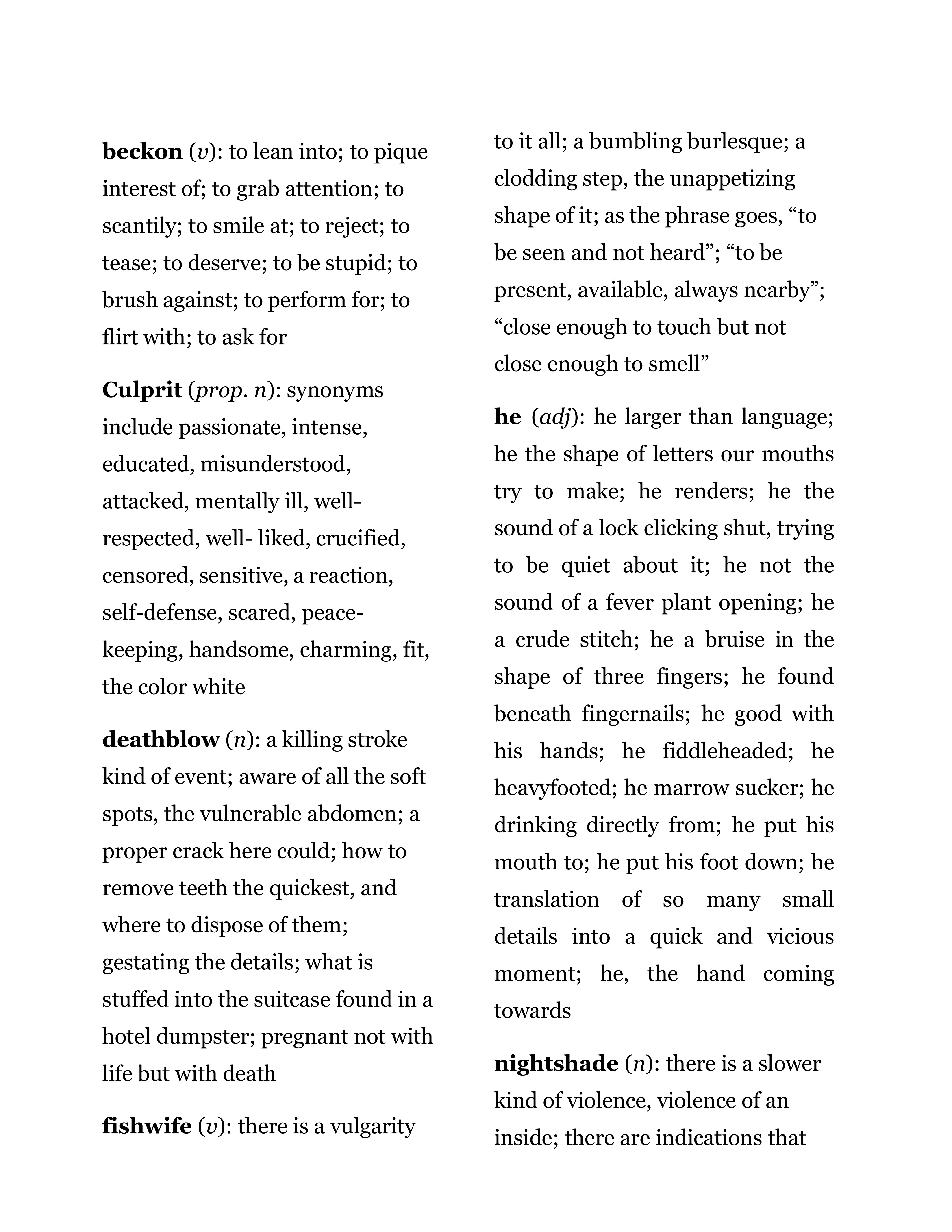2 poems by Jade Lascelles
1 essay by Carlina Duan,
on the poems of Jade Lascelles
“A woman goes for a run…”
TW: Gender-based violence; racial violence
Throughout my reading of these poems, something happened in my body: a murmur, a prickle, a memory of my own time spent running through cities, across side streets, in neighborhoods, beyond glimmering lakes, through parks teeming with magnolia and mosquitos—embracing the leap and tumble of air and sweat and strain of muscle until, yes, the inevitable alarm from some wayward encounter with a passerby; a car; a call shouted out as I sprinted past. The constant lurk of danger. To be a petite Asian woman intent on practicing movement with my body, only to be curbed, often, by the looming threat of anonymous eyes.
These poems explore the complex and labor-intensive process of something deceivingly simple: going on a run as a female-presenting body. Unfortunately, for many of us who inhabit intersectional bodily identities, we are all too familiar with the “disquiet undertone,” the “hinge point between comfort and concealment,” the “pace and possibility,” the “coil of … internal spring”—all additional textures and layers that complicate the simplicity of moving outside, in a public space. These poems invoke the embodied experience of running amidst and despite such threats, when the speaker continuously “is aware of her subtle dance steps” of caution and mitigation.
Beyond embodied process, the poem “A woman goes for a run among words” also examines the power and soft violence of language: “Words said in a polite way but with a disquiet undertone. Or words swathed in unabashed and unwanted sexuality. Or the words she hears in her head…” This poet is hyperaware of the power and danger of words when hollered at passing bodies on a street, including her own; the sticky residue of such language in inciting fear, exit strategy, and resilience. The first poem, styled after a thesaurus entry, includes “synonyms” and lyric possibilities for verbs, adjectives, and nouns. In these poems, language thrums and is reflective of its own violence and power, bringing to mind a line from beloved Oglala Lakota poet-artist-teacher Layli Long Soldier: “One word can be a poem believe it, one word can destroy a poem dare I.”
I think, too, of the danger of publics on women and gender nonconforming bodies, on bodies of color, on queer bodies. This set of poems asks: What does it mean when a simple “hobby” (so often conflated, at least in this country, as leisurely exercise) shifts into near-constant risk, anticipation of threat and fear? (And of course, I cannot help but draw a line between the danger of suburban runs and the luxury of having them. Here, I honor the memory, life, and care-work of Ahmaud Arbery, who, on a jog in the suburbs in 2020, was chased and murdered by three white men, in a racially motivated hate crime, one of many that have haunted our national history and present. This is not a footnote.)
As an able-bodied woman, as a running woman, as a living woman, as a woman alive, I think often about what it means for me to live in dialogue with my body. A line in this writer’s poems lingers with me: “…she holds conversation with her own breath. The pace and possibility of it.” I find pulse and courage in remembering breath-work in these poems, the “conversation with [my] own breath” (italics my own). Elizabeth Alexander writes, “Many things are true at once.” And throughout this sequence, I am reminded of the life and strength—the muscle—in the conditions of possibility we make for ourselves, despite.











